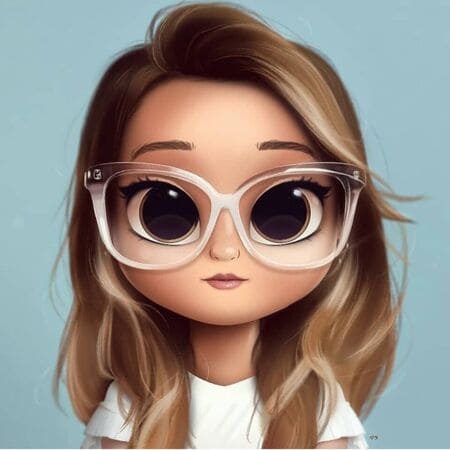Animation is pure magic—it’s the art of tricking the eye into seeing life where there’s only ink, pixels, or polygons. But behind that magic lies a secret weapon: solid drawing. This isn’t just some dusty old technique; it’s the backbone of every jaw-dropping animated moment you’ve ever seen. It’s about making flat sketches feel like they could leap off the screen, punch you in the face, or give you a hug. Solid drawing is the animator’s superpower for crafting characters and objects that look real, move with swagger, and hit you right in the feels.
Born from the legendary 12 principles of animation cooked up by Disney’s animation wizards in the 1930s, solid drawing is all about giving your creations weight, depth, and vibe. Whether you’re scribbling a 2D cartoon or rigging a 3D beast, this skill is your ticket to making stuff that doesn’t just move—it lives. Ready to level up? Let’s dive into the coolest, most epic breakdown of solid drawing you’ll ever need.
What’s Solid Drawing All About?
Solid drawing is a fundamental artistic technique that transforms flat, two-dimensional surfaces into compelling representations of three-dimensional space. At its core, solid drawing is about understanding and depicting the fundamental volume, weight, and spatial relationships of objects with precision and depth.
At its core, solid drawing is about turning flat doodles into 3D powerhouses. It’s not just sketching a stick figure and calling it a day—it’s about making every line scream “I exist!” Think of it like sculpting with a pencil or mouse: you’re carving out forms that have volume, attitude, and a place in the world. It’s the difference between a lifeless sketch and a character that feels like it could step out of the screen and high-five you.
This principle breaks down into five key pillars: form, volume, proportions, perspective, and shape. Nail these, and you’ve got the cheat codes to animation domination. Let’s unpack each one and see why they’re the building blocks of awesomeness.
The Five Pillars of Solid Drawing Greatness
1. Form in Solid Drawing: The DNA of Your Creation
Form is the 3D blueprint of anything you draw—think spheres for heads, cylinders for arms, or cubes for chunky robot feet. It’s the foundation of solid drawing, breaking down complex characters into simple, manageable 3D shapes you can wrap your brain around. A fierce dragon? Kick it off with a snaky tube body and a sharp, wedge-shaped head. A bouncy cartoon kid? Stack up spheres and ovals for that playful, springy feel.
Why’s it so dope? Because forms mess with our minds in the best way! Round, soft shapes whisper “cute and cuddly” like a plush toy, while sharp, jagged edges roar “watch out, I bite!” like a predator on the prowl. Before you even start animating, picking the right forms sets the whole vibe—whether your character’s a hero, a villain, or the goofy comic relief. It’s the first step in character design, locking in that visual storytelling power. Mastering form is like planting the seed for every epic animation move to come—get it right, and you’re already halfway to legendary.
2. Solid Drawing of Volume: Making It Feel Real
Volume is the magic sauce that takes those forms and pumps them full of oomph. It’s the illusion of mass—making a character look heavy, light, or perfectly in between, like they’ve got real weight to throw around. Shadows and highlights are your ride-or-die crew here. A beefy barbarian? Slap some deep, dark shadows under those bulging biceps to show off their power. A wispy ghost? Blend in soft gradients and ditch the hard edges for that floaty, ethereal glow.
This is where your fantasy sport drawings ditch the flat life and start feeling like they could crash through a wall or drift away like a feather. Volume sells the story of how your character moves, how they occupy space, and how they hit the ground—or don’t.
It’s the difference between a 2D sketch and a 3D powerhouse. Crank up your volume game, and suddenly your animation’s got depth, texture, and a realism that hooks the viewer right in the gut.
3. Solid Drawing Proportions: The Balance Game
Proportions are all about how the pieces of your puzzle fit together—it’s the relationship between forms. A massive head on a puny body? You’ve got a hilarious cartoon vibe straight out of a gag reel. Long legs and a sleek torso? Boom, instant superhero swagger. Even when you’re cranking the exaggeration dial for style, you’ve got to know the anatomical rules so your character doesn’t look like a busted-up action figure.
Master proportions, and your poses will feel legit, no matter how crazy you stretch, squash, or twist them. It’s the glue that holds your character design together, keeping every movement and expression believable. Whether you’re drawing a hulking monster or a tiny sidekick, nailing proportions ensures your solid drawing stays tight and your animation flows like a dream. It’s all about finding that sweet spot between realism and style—and owning it.
4. Perspective: Dropping You Into the Scene
Perspective is your golden ticket to a full-on 3D world. It’s about planting your character in space so they don’t look like a cheap sticker slapped on the screen. Tools like vanishing points, horizon lines, and overlapping shapes build that sweet, sweet depth—think a character’s arm blasting toward the camera in a wicked foreshortening move, or a sprawling cityscape fading into the misty distance.
This is where your drawings turn cinematic, pulling the social casino audience into the action like they’re part of the ride. Nail perspective, and they’re not just watching—they’re ducking punches, chasing villains, or soaring through the sky. It ties your solid drawing to the environment, making every angle and pose feel grounded and alive. Whether it’s a bird’s-eye view or a worm’s-eye shot, perspective is the spark that lights up your visual storytelling and keeps the 3D illusion pumping.
5. Shape: The Soul of the Silhouette
Shape is the spicy kick—those bold lines and curves that make your character pop like a firework. A spiky silhouette? Instant danger alert—think thorns and claws. Smooth, flowing lines? You’re in calm and chill territory, all peace and serenity. It’s not just the outline; it’s the energy in every stroke you lay down. Dynamic shapes scream motion and chaos, while stiff, blocky ones feel like a statue frozen in time.
Shape language is your stealthy secret weapon for injecting personality into every frame. It’s how you craft a pose so readable it hits from a mile away, telegraphing mood and intent before the character even twitches. From exaggerated caricatures to sleek minimalism, shape ties back to solid drawing by giving your forms a voice. It’s the final touch that turns a good animation into a vibe that sticks with you—pure, unfiltered character soul.
How to Master Solid Drawing Like a Boss
Solid drawing isn’t some gift from the animation gods—it’s a skill you grind for. The more you practice, the more it becomes second nature. Here’s your ultimate toolkit of techniques to flex those drawing muscles and turn you into a solid drawing legend.
1. Line of Action: The Flow That Slays
Every pose has a backbone—a single, swooping line that captures its energy. This “line of action” is like the heartbeat of your drawing. A leaping ninja? A sharp, diagonal slash. A slumping couch potato? A lazy, drooping curve. It’s the trick to making static sketches feel alive and kicking.
2. Turnarounds: Spin It to Win It
Draw your character spinning 360 degrees—front, side, back, three-quarters. It’s like X-ray vision for your brain, forcing you to understand every angle of their form. Turnarounds are your crash course in volume and proportions, making sure your character holds up no matter where the camera goes.
3. Life Drawing: Sketching the Real Deal
Grab a pencil and hit the streets (or a figure drawing class). Sketch people moving, posing, living. Quick, messy gesture drawings capture the flow of weight and motion—like a dancer’s twirl or a dog’s playful bounce. It’s raw, it’s real, and it trains your eye to see the magic in everyday life.
4. Lighting: Shadows That Pop
Play with light like a mad scientist. Side lighting carves out form with killer shadows and glowing highlights. Backlighting? Instant drama with a halo effect. Study how light hugs curves or cuts sharp edges—it’s your shortcut to making flat drawings feel sculpted.
5. Reference: Steal from Reality
Photos, videos, even your own reflection—reference is your cheat sheet. Watch a boxer throw a punch frame-by-frame or study how a cat leaps. Mirror your own goofy faces to nail expressions. The more you soak in the real world, the crazier (and truer) your imagination gets.
6. 3D Tools: Digital Power Boost
Not just for hand-drawn heroes—digital tools like Maya, Blender, or ZBrush are solid drawing’s secret sauce. Sculpt a character, spin it around, and light it up. It’s like training wheels for your brain, helping you lock in those tricky angles and forms before you sketch.
Why Solid Drawing Is Your Animation Superpower
Mastering solid drawing doesn’t just make you a better artist—it unlocks a whole universe of animation awesomeness. Here’s why it’s worth the grind:
- Mind-Blowing Motion: Understanding form means you can twist, stretch, and foreshorten like a pro. Complex moves? No sweat.
- Epic Exaggeration: Know the rules, and you can break ‘em. Push proportions for wild, stylish effects that still feel solid.
- Killer Silhouettes: Clear, punchy poses that read instantly—even in a blurry thumbnail. Appeal level: maxed out.
- Weight That Wows: Tangible characters bounce, flop, or smash with physics that feel real. It’s hypnotic.
- Acting That Slaps: Solid skills let your characters emote, joke, and strut their stuff. Personality pours out of every frame.
- Consistency Is King: No more wonky drawings—your characters stay on-model, no matter the angle or style.
Solid Drawing Tools Game Artists Love
There are a few tools for solid drawing we believe are ideal for newbiew and pros. We’ve tested them all to give you detailed overview, so you can choose the right animation tools for you solid drawing project.
Blender: The Free Powerhouse of 3D Design
Blender isn’t just free—it’s a professional-grade 3D modeling marvel that’s become a game artist’s best friend.
What Makes Blender Special
- Completely free and open-source
- Supports full 3D pipeline: modeling, rigging, animation, simulation, rendering
- Powerful sculpting tools for organic character creation
- Built-in game engine for quick prototyping
- Active community with tons of tutorials and plugins
- Works on Windows, Mac, and Linux
Insider Tip: Many indie game studios use Blender exclusively because it offers professional-grade tools without the massive price tag of other software.
ZBrush: The Digital Sculpting Maestro
ZBrush is like digital clay for 3D artists, allowing microscopic detail that brings characters to life.
ZBrush’s Superpowers
- Extremely detailed digital sculpting
- Millions of polygons in a single model
- Unique “sculpting” interface that feels like working with real clay
- Creates ultra-realistic textures and surface details
- Exports directly to game engines
- Used in major film and game productions
Cool Fact: Characters in battle royale games like World of Warcraft and Overwatch often start their life as ZBrush sculptures.
3D Sketching Apps: Creativity in Motion

Modern sketching apps aren’t just about drawing—they’re about creating movable, rotatable 3D concepts.
Top 3D Sketching Tools
- Procreate (iPad):
- Incredible painting and sketching capabilities
- 3D model rotation and perspective tools
- Works perfectly with Apple Pencil
- Great for concept art and initial character designs
- Morphi (Tablet/iPad):
- Designed specifically for 3D modeling
- Touch-based 3D object creation
- Easy export to other 3D software
- Perfect for quick concept development
- Sketchbook by Autodesk:
- Free professional sketching app
- Advanced layer and perspective tools
- Works across multiple devices
- Excellent for initial character and environment concepts
Motion Capture: Bringing Digital Characters to Life

Motion capture isn’t just technology—it’s digital magic that transforms human movement into game character animation.
How Motion Capture Works
- Actors wear special suits with tracking markers
- Multiple cameras capture precise body movements
- Software translates human motion into digital character animation
- Provides hyper-realistic movement and expressions
Motion Capture Technologies
- Optical Marker Systems:
- Uses reflective markers on a suit
- Extremely precise tracking
- Used in high-end game and film productions
- Inertial Systems:
- Uses sensors embedded in performance suits
- Works in smaller spaces
- More portable and flexible
- Great for indie game development
- Depth Camera Systems:
- Uses depth-sensing cameras like Microsoft Kinect
- Affordable and accessible
- Good for basic motion tracking
- Popular with indie developers
Pro Insight: Companies like Industrial Light & Magic and game studios like Naughty Dog use advanced motion capture to create incredibly lifelike character movements.
Emerging Technologies
- AI-Assisted Animation: Machine learning that can predict and smooth character movements
- Real-time Motion Capture: Instant translation of actor movements into game character animation
- Virtual Reality Capture: Using VR controllers and headsets to track full-body movements
Budget Considerations
- Free/Low-Cost: Blender, Morphi (basic version), Kinect mocap
- Mid-Range: ZBrush, Procreate, advanced mocap suits
- Professional: High-end optical mocap systems, industry-standard software
These tools aren’t just software—they’re the paintbrushes and chisels of modern game art. Each tool offers a unique way to bring digital worlds from imagination into reality.
Building Your Solid Drawing Arsenal

Think of solid drawing as your animator’s toolbox. It’s not about being born with “talent”—it’s about stacking skills until you’re unstoppable. Here’s how to pack your kit:
- Study the Legends: Copy sketches from masters like Michelangelo or modern gods like Glen Keane. Steal their secrets.
- Sketch Everything: People on the bus, your dog, a random lamp—draw it all. Life’s your playground.
- Frame-by-Frame Fandom: Pause your favorite cartoons and analyze how they nail form and flow.
- Digital + Analog Mashup: Blend pencil sketches with 3D sculpts. Use every tool to sharpen your eye.
- Never Stop: This isn’t a one-and-done deal. Solid drawing is a lifelong grind—and it’s fun.
Walt Stanchfield, Disney’s drawing guru, called it “visual thinking.” It’s not just lines on paper—it’s bottling real life into something epic. Start simple, build slow, and soon you’ll be animating like a rockstar.
Solid Drawing in Action: Real-World Coolness
Imagine Spider-Man swinging through New York. Without solid drawing, he’d look like a floppy paper cutout. With it? His muscles flex, his webs snap, and every pose screams “I’m your friendly neighborhood badass.” Or take Pixar’s Up—those balloon-lifted houses and wrinkly old Carl? Solid drawing makes them feel heavy, grounded, and oh-so-huggable.
Even in video games, solid drawing rules. Think of Mario’s chunky boots or Kratos’ hulking frame—every pixel’s built on these principles. It’s the thread tying 2D classics to 3D blockbusters.
The Unique Challenges of Solid Drawing in Games
Game design demands a more complex approach to solid drawing. Artists must consider not just visual representation, but how objects will move, interact, and feel within a dynamic, interactive environment. The principles of volume, mass, and spatial relationships take on new meaning when translated into playable experiences.
Core Considerations for Game Solid Drawing
- Technical Dimensionality: Unlike static art, game solid drawing must account for multiple viewing angles, potential player interactions, and performance limitations. A character or object must look convincing from every perspective while maintaining optimization for game engines.
- Functional Aesthetics: In mental health games, solid drawing isn’t just about looking good—it’s about communicating information. The form of an object needs to instantly convey its function, potential interactions, and role within the game world.
- Animation and Movement: Solid drawing in eSport games must anticipate movement. Artists must understand how a character’s or object’s volume will deform, rotate, and interact during different animation states.
The Grand Finale: Why Solid Drawing Rules
Solid drawing isn’t just a skill—it’s the spark that ignites animation’s magic. It’s what makes characters leap, laugh, and live in ways that stick with you long after the credits roll. Whether you’re doodling on a napkin or rigging a CGI dragon, mastering form, volume, and shape turns “meh” into “whoa.”
Walt Disney nailed it: “When you draw, find the life in the figure and bring it out.” That’s the mission. Solid drawing is your launchpad to creating worlds where anything’s possible—and everything feels real. So grab your pencil, crank the tunes, and start sketching. The animation universe is waiting for your next masterpiece.






